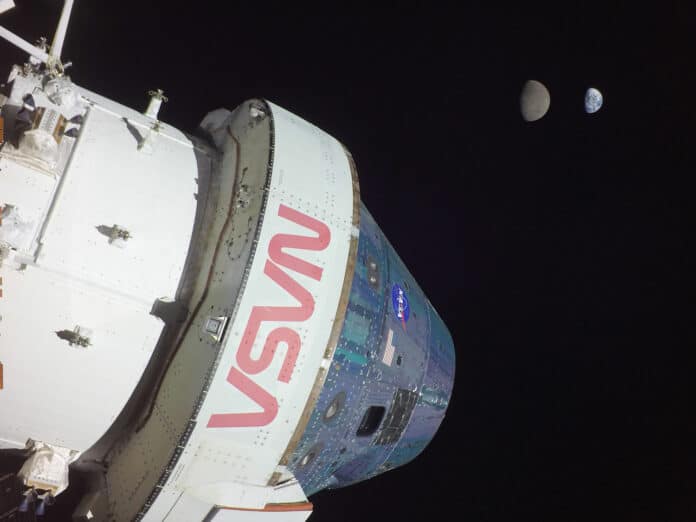On flight day 13 (Nov. 28, 2022), NASA’s uncrewed Orion spacecraft reached its maximum distance from Earth during the Artemis I mission when it was some 270,000 miles away from our home planet. Orion has now traveled farther than any other spacecraft built for humans, breaking the previous record set by Apollo 13 in 1970.
According to NASA, before 8 p.m. EST, Orion was 268,457 miles from Earth and 43,138 miles from the Moon, cruising at 1,679 miles per hour.
The spacecraft also captured imagery of Earth and the Moon together throughout the day, including of the Moon appearing to eclipse Earth. Reaching the halfway point of the mission on Flight Day 13 of a 25.5-day mission, the spacecraft remains in healthy condition as it continues its journey in a distant retrograde orbit, an approximately six-day leg of its larger mission thousands of miles beyond the Moon.
Engineers had originally planned an orbital maintenance burn but determined it was not necessary because of Orion’s already precise trajectory in a distant retrograde orbit. Based on Orion’s performance, the team is examining adding seven additional test objectives to further characterize the spacecraft’s thermal environment and propulsion system to reduce risk before flying future missions with crew.
Flight controllers also completed 9 of 19 translational burns and exercised the three types of engines on Orion – the main engine, auxiliary thrusters, and reaction control system thrusters. Approximately 5,640 pounds of propellants have been used, which is about 150 pounds less than prelaunch expected values. More than 2,000 pounds of margin remain available beyond what teams plan to use for the mission, an increase of more than 120 pounds from prelaunch expected values. So far, teams have already sent more than 2,000 files from the spacecraft to Earth.
“Because of the unbelievable can-do spirit, Artemis I has had extraordinary success and has completed a series of history-making events,” said NASA Administrator Bill Nelson. “It’s incredible just how smoothly this mission has gone, but this is a test. That’s what we do – we test it, and we stress it.”
This time, the ship is uncrewed, but if it completes the current flight without incident, astronauts will be on the next outing in two years’ time. NASA is planning a series of ever more complex missions with Orion. All these missions are part of the agency’s Artemis program that seeks to return people to the lunar surface after a gap of 50 years.
